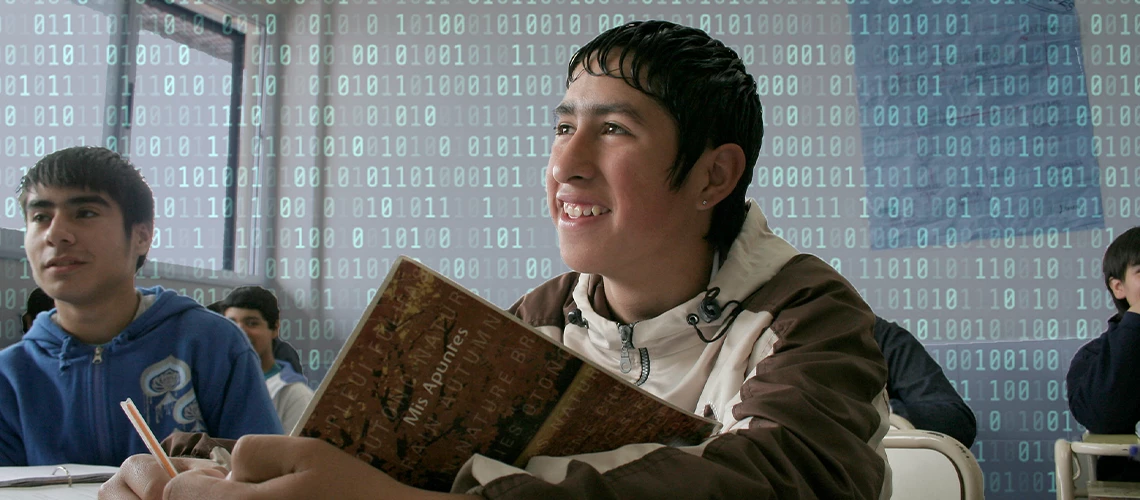 Students in rural areas of Argentina. Photo: Nahuel Berger / World Bank
Students in rural areas of Argentina. Photo: Nahuel Berger / World Bank
There is a meme going around in techie circles that asks, “Who led the digital transformation in your company? a) the CEO, b) the CTO, or c) COVID-19?” It then shows that the answer is C. It’s funny because it seems true. But, in fact, it’s not. Governments have been actively trying to ensure business continuity during the coronavirus pandemic, in different ways and with varying success.
The countries that are struggling have a gap between their IT infrastructures and policies and the solutions needed to address the problems posed by the pandemic. By contrast, governments that have managed to devote resources to developing sound, reliable IT systems are now finding it much easier to provide digital services for citizens and businesses.
Efforts to develop, deploy, and sustain IT systems during “normal” times are paying off in the pandemic, enabling governments to adapt quickly and provide solutions needed as part of the response. Even when things don’t go as smoothly as planned – such as when the number of visitors briefly makes a web site crash or when there aren’t enough remote access licenses to serve all interested parties simultaneously – governments that have been consistently developing and improving digital services are responding to the COVID-19 emergency better.
They have been able to rapidly reallocate existing knowledge and resources to the response. The capacity of digital government services to provide support during emergencies is deeply related to the in-house knowledge to adapt processes without compromising security, the interoperability of the systems in place, and a management style that allows innovation.
For example, Argentina’s social protection agency (ANSES) is able to provide, without intermediaries, an emergency income to 8 million people who work in the informal sector thanks to the digital platform and IT systems in place – systems that have been developed, deployed, and sustained for the past 15 years. When COVID-19 appeared, broadband connectivity in the country had been improved by 500% in the past five years, 90% of population has internet access in their homes or via their phones, and the remote access platform for digital services provided almost 2,000 services online.
In Uruguay, Plan Ceibal can offer online education to young children throughout the country while schools are closed, thanks to platforms that have been developed and improved for more than 10 years. When COVID-19 appeared, the country’s digital government agency (AGESIC) had defined a digital strategy, with 90% of government services available online from start to completion. And over 90% of the Uruguay’s population had access to the internet.
North Macedonia has reliable country systems already in place, including the treasury system, electronic payments, and treasury single account operated by the National Bank, as well as the tax system. As part of COVID-19 emergency response, the government and the World Bank rapidly prepared a project using contingency financing from a recently approved project. A digital solution was needed to allow online applications from firms, automated selection, as well as announcements of financial assistance to eligible firms. This required extending the existing capabilities of government systems. The platform, once fully tested and operational, will automate the payment of both government and World Bank assistance to eligible firms in upcoming weeks. It will also improve transparency by posting the selected applications and digitally receiving and responding to the questions and grievances from ineligible firms.
Zimbabwe launched its e-government program in 2011 and has also worked to improve its public financial management system in the past years. As a response to the COVID-19 emergency, the World Bank is helping the Ministry of Finance and Economic Development improve the remote connectivity and system access for key officials through a virtual private network and videoconferencing. These platforms will ensure business continuity and remote processing of government payments, including the attachment of supporting documents and tracking of COVID-related revenues and expenses.
The focus should not be about designing digital services for unexpected circumstances, as that presents considerable opportunity costs. Rather, our task is to work with governments across regions and income levels to develop secure, interoperable IT systems and help them define their digital strategy so that they can provide effective services in normal times, while maintaining flexibility and vision to adapt to exceptional circumstances. As in Argentina and Uruguay, the World Bank Group has a portfolio of GovTech projects that are helping our clients leverage digital technology for government services. As the COVID-19 emergency has shown, sustained investment in digital services can be crucial to preparedness and resilience.



Join the Conversation